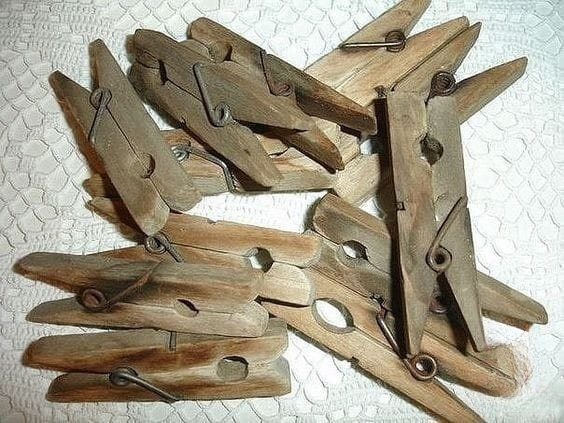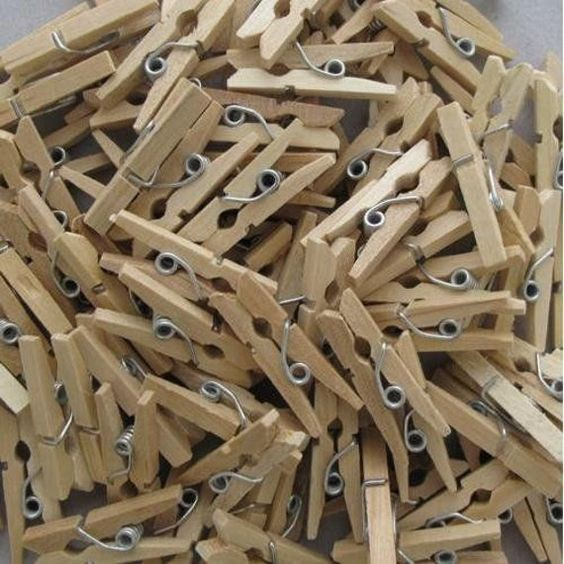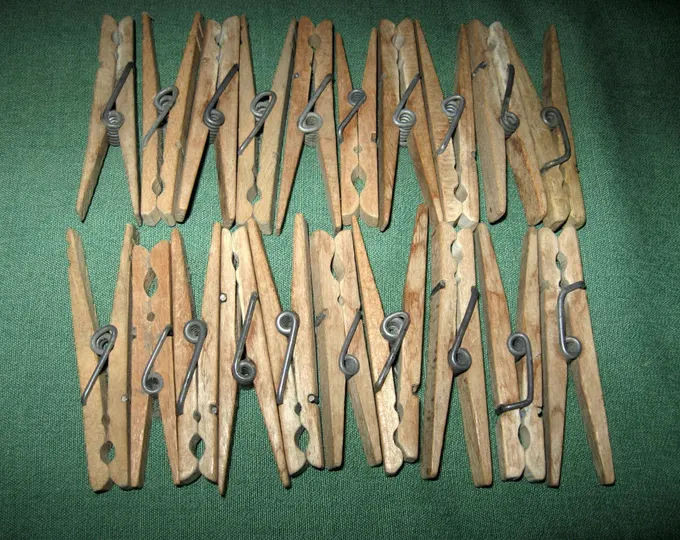When you think of household innovations, the humble clothespin might not come to mind right away. However, this small yet mighty device has played a significant role in our daily lives, and its history is more fascinating than you’d imagine. From its early wooden design to modern-day plastic iterations, the clothespin has evolved dramatically over the years. In this article, we’ll take a closer look at the invention of the clothespin, its improvements, its cultural significance, and its many uses beyond just hanging clothes.

The Birth of the Clothespin: David Smith’s 1853 Invention
The clothespin, as we know it today, was invented in 1853 by David Smith of Springfield, Vermont. Before Smith’s innovation, people often hung their laundry on bushes or lines without using any fasteners. This method was inefficient, especially on windy days. Smith changed all that by designing a clothespin that consisted of two wooden pieces held together by a simple spring. This design allowed for a more secure grip on clothes, making it much easier to dry laundry outdoors.
Smith’s clothespin featured a spring between two wedge-shaped pieces of wood. By pinching the top, the two pieces would open, and once released, the spring would force them shut. This simple lever action revolutionized laundry practices across the country, making it easier and more efficient to hang clothes to dry.
The 1887 Improvement: Solon E. Moore’s Contribution
Though David Smith’s invention was groundbreaking, it was further improved in 1887 by Solon E. Moore. Moore introduced a coiled spring, made from a single wire, that acted as both a spring and a fulcrum. This eliminated the need for additional components, reducing the manufacturing costs and making the clothespin even more efficient. Moore’s design was the first successful spring-actuated clothespin, and it quickly became a household staple, with production ramping up across the United States.
Vermont, in particular, became the center of clothespin manufacturing. Companies like the United States Clothespin Company and the National Clothespin Company dominated the industry, producing millions of clothespins annually. However, the introduction of electric dryers in the mid-20th century led to a decline in demand, and by 2009, the last American-manufactured clothespin rolled off the production line.
Clothespins in Art and Craft: More Than Just a Laundry Tool
While the primary function of clothespins has always been to hold clothes on a line, they’ve found their way into various creative uses as well. Clothespins are a popular tool in children’s crafts, offering an easy way to create figures, animals, and decorations. Their simple design and versatility make them a go-to material for DIY projects.
Artists have also been inspired by clothespins. One of the most famous examples is Claes Oldenburg’s Clothespin sculpture, a massive 45-foot sculpture installed in Philadelphia. This larger-than-life peg not only showcases the beauty of everyday objects but also highlights how deeply ingrained the clothespin has become in our cultural consciousness.
Modern Clothespins: From Wood to Plastic
Although the original clothespins were made of wood, modern versions are more likely to be made from plastic, often with a steel spring. Plastic clothespins are lightweight, affordable, and resistant to weather conditions, making them ideal for outdoor use. However, wooden clothespins are still favored by many for their durability and aesthetic appeal.

Additionally, stainless steel clothespins have emerged in recent years. These clothespins do not rust or decay with outdoor use, providing a longer lifespan than their wooden and plastic counterparts. Their spring mechanism is designed to prevent twisting, ensuring that they maintain a strong grip on clothes.
Clothespins on Film Sets: The Versatile C47
Interestingly, clothespins have become an essential tool on film sets, where they are commonly referred to as C47s, CP 47s, or simply “bullets.” Film crew members use wooden clothespins to attach gels and diffusers to hot studio lights, as the wooden construction does not conduct heat, making them safe to handle. This unexpected use of clothespins demonstrates their versatility and practicality beyond the laundry line.
The origin of the term “C47” is a subject of debate, but what’s clear is that these simple tools are indispensable to lighting technicians, gaffers, and production assistants in the film industry.
Cultural Significance: Celebrating Peg Day
Believe it or not, there’s even a day dedicated to celebrating clothespins. On May 6, known as Peg Day, a small group of enthusiasts in the United Kingdom gathers to honor this everyday object. The tradition began in 2003 in Stockton-on-Tees, and while the holiday might seem quirky, it highlights the lasting impact of the clothespin on our daily lives. It’s a reminder that even the simplest inventions deserve recognition for their ingenuity and utility.

Conclusion: The Clothespin’s Enduring Legacy
From its invention by David Smith in 1853 to its widespread use in households and film sets alike, the clothespin is a testament to the power of simple design. Over the years, it has evolved from a wooden laundry tool to a versatile, multi-purpose item used in crafts, art, and even filmmaking. Whether made from wood, plastic, or stainless steel, the clothespin continues to prove its value in various aspects of life.
As we hang up our clothes or create a DIY project, it’s worth taking a moment to appreciate the humble clothespin—an invention that has stood the test of time and continues to be a staple in households and industries across the world.


